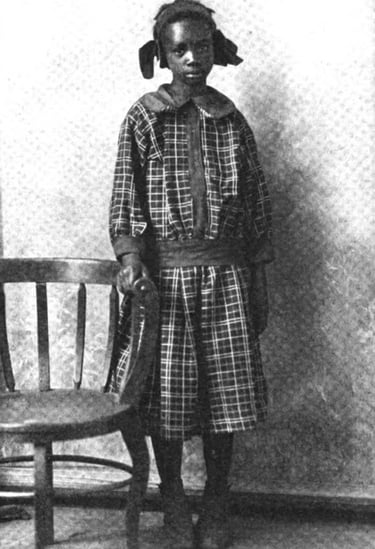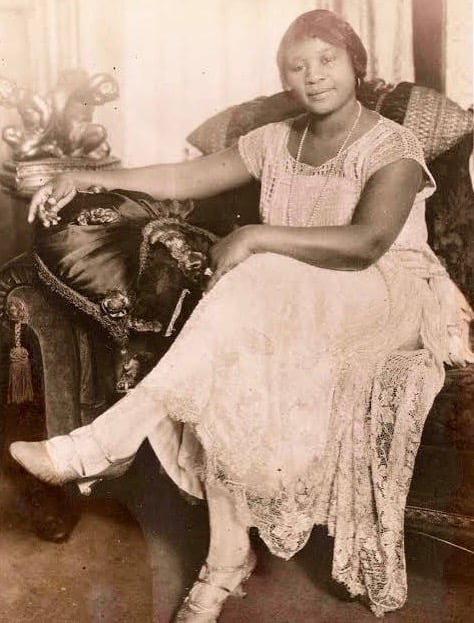True Story of Sarah Rector — The 11-Year-Old Black Oil Millionaire Whose Story They Tried to Rewrite
Black Zone Magazine | The True Story Of Sarah Rector The True Story of Sarah Rector — The 11-Year-Old Black Oil Millionaire Whose Story They Tried to Rewrite in the film Sarah's Oil
UNTOLD, HIDDEN, OMITTED HISTORYFEATURED ARTICLES
11/7/20255 min read


Here’s the True Story of Sarah Rector — The 11-Year-Old Black Oil Millionaire Whose Story They Tried to Rewrite
By Maurice Woodson | Black Zone Magazine | November 7, 2025
I adore Tonya Bolden — I Love her books, especially Searching For Sarah Rector: The Richest Black Girl In America. It is essential reading, a rich and honest reflection of one of the most remarkable young Black women in American history. But let’s make something clear: this new film Sarah’s Oil is not Tonya Bolden’s book. When white Hollywood says “inspired by,” they mean that as loosely as possible.
This is exactly why we must tell our own stories.
The film — directed by white christian filmmaker Cyrus Nowrasteh and co-written with his also white christian wife Betsy Giffen Nowrasteh — isn’t a tribute to Sarah Rector’s courage. It’s a whitewashed Christian propaganda piece designed to soften the truth and repackage Black history through a white savior lens. They took a story of exploitation, systemic racism, and perseverance, and turned it into a sermon — a distorted fantasy built to comfort white guilt and peddle Christian indoctrination to the Black community.
The movie stars Zachary Levi, a MAGA Trump supporter, cast as the so-called “white hero,” a man who never existed. Levi’s character is an invention — a mix of three white men who crossed paths with young Sarah and her family. The real story of Sarah Rector had no white saviors, no kindly mentors guiding her toward prosperity. What she had were predators — white “guardians,” oil men, and legislators who tried to steal her land, her money, and her freedom.
But Hollywood couldn’t sell that truth. So they created a fiction that made them feel righteous.
The True Story They Tried to Bury
Sarah Rector was born March 3, 1902, in what was then the Muscogee (Creek) Nation Territory — today known as Taft, Oklahoma. She was one of six children of Joseph Rector and Rose McQueen, both descendants of Black Muscogee Creek Indians. Her grandfather was enslaved by a Creek man named Reily Grayson, who later freed him.
After the Treaty of 1866, the federal government labeled their descendants as “freedmen” on the Dawes Rolls, giving them land allotments in the push to integrate Indigenous Territory with the Oklahoma Territory — the same process that later birthed the state of Oklahoma.
Sarah’s allotment was 159.14 acres of land — land white officials deemed “infertile” and useless for farming. The “good” land had already been set aside for white settlers. To make matters worse, her family was forced to pay a $30 annual property tax (roughly $1,000 today). When her father tried to sell the land, he was blocked by racist restrictions that kept Black landowners trapped in debt and dependency.
In 1911, desperate to ease the financial strain, Joseph Rector leased the land to the Standard Oil Company. Two years later, independent driller B.B. Jones struck oil — a gusher producing 2,500 barrels a day. Overnight, young Sarah became one of the richest children in America. Her well brought in $300 a day — equivalent to over $10,000 daily today.
That’s when white America came knocking.
Under the racist guardianship laws of the time, any Black or Indigenous person — especially minors — who acquired wealth was assigned a white guardian to “manage” their money. Sarah’s parents were stripped of control, and a white man named T.J. Porter was placed in charge of her estate. He, and others like him, siphoned off her wealth under the guise of protection.
By October 1913, Sarah’s royalties totaled $11,567 (nearly $370,000 today). Her land had become part of the lucrative Cushing-Drumright Oil Field, but her control over her own fortune had been stolen. White officials even declared her an “honorary white” — a legal fiction that allowed her to access white-only banks and stores, while still denying her the full humanity of being Black.
The hypocrisy was staggering.
Black Press and Black Leadership Fought Back
When rumors began spreading that Sarah was a “white immigrant child held captive in poverty,” the Black press stepped in. The Chicago Defender exposed the truth — that Sarah was a young Black girl being robbed by white guardians and the state of Oklahoma.
That article caught the attention of Booker T. Washington, W.E.B. Du Bois, and the newly formed NAACP, which sent special agent James C. Waters Jr. to investigate. Waters’ letter to the white financial guardian said it all:
“It is not possible to have her cared for in a decent manner by a member of a race which would deny her kind the treatment accorded a good yard dog.”
The NAACP launched a Children’s Department to investigate similar abuses of Black and Indigenous minors. By 1914, they had intervened in Sarah’s case, ensuring she was placed at Tuskegee Institute, where she studied under Booker T. Washington’s guidance.
The Woman She Became
After graduation, Sarah moved to Kansas City, bought a home on 12th Street, and lived a vibrant, independent life. She married businessman Kenneth Campbell in 1920 and later, in 1934, restaurateur William Crawford, with whom she remained until her death in 1967.
Sarah hosted parties attended by the likes of Count Basie and Duke Ellington, drove fine cars, and lived with dignity. Like many, she lost much of her fortune during the Great Depression, but she never lost her spirit or stability. She remained comfortable and respected — a living example of resilience in a world designed to erase her.
What They Don’t Want Told
Sarah Rector’s true story isn’t about divine blessing or white intervention — it’s about survival in the face of systemic theft. Every white “ally” who entered her orbit came to profit. It was cultural and economic genocide, wrapped in the language of “guardianship.”
And now, over a century later, white filmmakers are once again profiting off her name — removing the hard truth to make it palatable for church audiences and studio profits.
Let’s be clear: Sarah Rector didn’t need a white hero. What she needed — and finally received — was the protection of her own community, Black journalists, Black educators, and Black activists who refused to let her be erased.
Sarah’s Oil is not her story. It’s Hollywood fantasy.
What Tonya Bolden wrote — and what history proves — is that Sarah Rector was a child who became a millionaire not by miracle, but by circumstance, resilience, and courage.
When Hollywood rewrites that, they’re not just distorting art — they’re distorting truth.
That’s why we do what we do here at Black Zone Magazine — to make sure the truth, our truth, never gets whitewashed again.
For more Articles, True History, Black Authored Books and Classic Black Cinema/Documentaries/Newsreels as well as to read our monthly Magazine visit our website at https://blackzonemagazine.com
#Sarahsoil #SarahRector #sarah'soil #AmericanHistory #Hollywoodlies #11yearoldblackmillionaire #trueBlackHistory #BlackHistory #Hiddenblackhistory #BlackZoneMagazine


